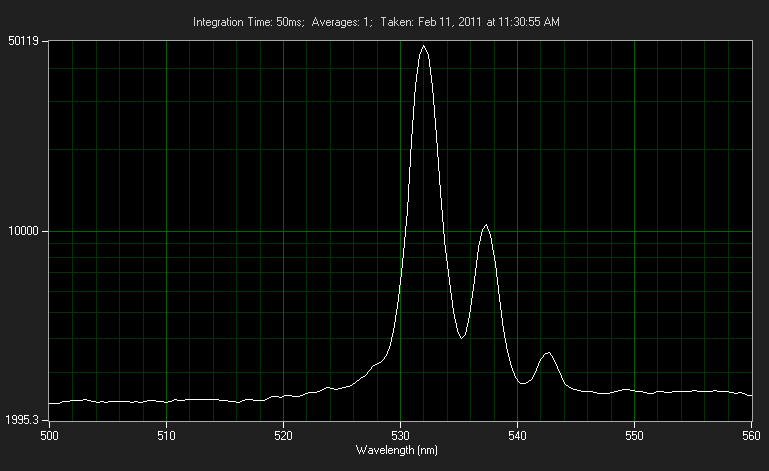Hiemal
0
- Joined
- Dec 27, 2011
- Messages
- 1,443
- Points
- 63
Hey all.
I know that inside of green laser pointers there is a DPSS (diode pumped solid state) system.
There's an 808 nm ir diode that goes through a crystal to make 1064 nm, and then through a KTP crystal to halve the wavelength.
From what I've read, KTP works all the way down to 994 nm...(upper frequency range I didn't find out)
Is there any way to possibly make a 500 nm DPSS system using this idea? (or any wavelength in that region?)
If there WAS an IR diode in between 980 nm and 1064 nm that is... How does the crystal that bumps the 808 nm up to 1064 work? (is there any other frequency that could possibly be used?)
And to those who say alignment and mirrors and cavities,
KTP crystal doubling a pulsed Nd:YAG laser - YouTube seems to work pretty well considering he's just holding it there with a pair of pliers.
Just some thoughts of mine, and well, I apologize if any of them are kind of stupid.
Thanks for any answers! :wave:
I know that inside of green laser pointers there is a DPSS (diode pumped solid state) system.
There's an 808 nm ir diode that goes through a crystal to make 1064 nm, and then through a KTP crystal to halve the wavelength.
From what I've read, KTP works all the way down to 994 nm...(upper frequency range I didn't find out)
Is there any way to possibly make a 500 nm DPSS system using this idea? (or any wavelength in that region?)
If there WAS an IR diode in between 980 nm and 1064 nm that is... How does the crystal that bumps the 808 nm up to 1064 work? (is there any other frequency that could possibly be used?)
And to those who say alignment and mirrors and cavities,
KTP crystal doubling a pulsed Nd:YAG laser - YouTube seems to work pretty well considering he's just holding it there with a pair of pliers.
Just some thoughts of mine, and well, I apologize if any of them are kind of stupid.
Thanks for any answers! :wave:







